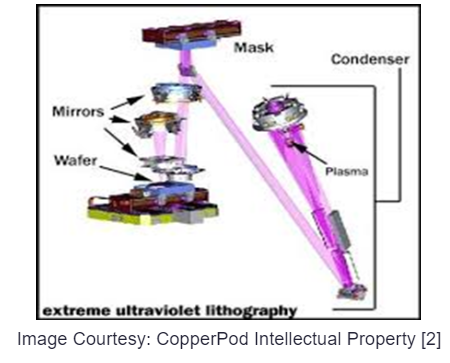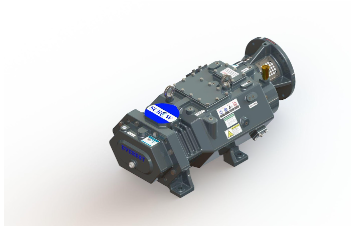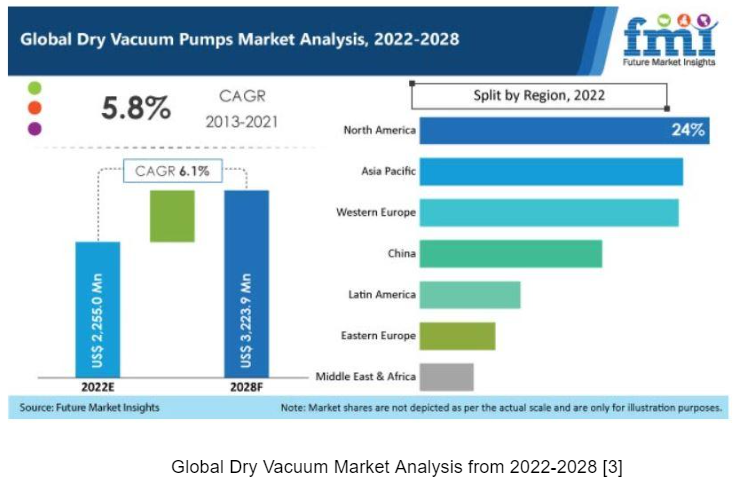Choose a different country or region to see the content specific to your location
Select Your Country/Region
Current Region:
 Global (EN)
Global (EN)
How can we help you?

Semiconductors are shaping our world, contributing to every aspect of human welfare. Evolutions like Cell phones, computers, internet and social media owe their existence to the advancements in semiconductor technology. The latest trends of Big data and Artificial Intelligence have paved the way for new growth and innovation in the semiconductor market.
Vacuum plays a vital role in realizing the semiconductor chip. From the processing of the initial raw product to the realization of the final chip, various processes involve different levels of vacuum. The various processes involved in semiconductor industry are
Deposition processes create layers of dielectric (insulating) and metal (conducting) materials used to build a semiconductor device. Depending on the type of material and structure being made, different techniques are employed. The various technologies include: Physical Vapor Deposition (PVD), Plasma Enhanced Chemical Vapor Deposition (PECVD), Sub-Atmospheric Chemical Vapor Deposition (SACVD), Low Pressure Chemical Vapor Deposition (LPCVD) and Atomic Layer Deposition (ALD). Each technology requires different levels of vacuum.
The most common PVD method is sputtering technology where the inert gas ions generated by plasma are bombarded on the target material. The combination of dry roughing pumps along with turbo/cryo pumps is best suited for the PVD method.
Plasma-enhanced CVD (PECVD) and ALD are used to form the critical insulating layers that isolate and protect all of these electrical structures. Except High Density Plasma deposition (HDPCVD), most of the processes operate under primary vacuum, in the mbar pressure range.
LPCVD applications are typically used in semiconductor manufacturing to create Polysilicon thin films, insulating oxides or passivation layers. Diffusion is a thermal process used for oxidation and nitration of the wafer surface, or to change the electrical properties of the doped layers.
ALD processes operate under primary vacuum in the range of 0.1 to 5 mbar. Based on the volume of manufacturing equipment, capacities of dry pumps can be determined so that faster evacuation with high throughput is ensured.

Etching process results in creation of chips after selectively removing films and materials that are deposited on the wafer. Strip and clean techniques are used between manufacturing steps to eliminate unwanted material that could later lead to defects and to prepare the wafer surface for subsequent processing. The vacuum requirement for stripping and cleaning process is in the range of 1 mbar and high capacity dry pumps are most suited. Due to the absence of load lock chambers in the some equipment used in this process, faster pump down times are expected for high throughput
Processes like Dry dielectric etching, Conductor and Polysilicon etching operate in the range of 0.01 to 0.001 mbar and combinations of turbopumps backed by dry vacuum pumps are mostly suited for this process. Turbopumps are connected to the chamber while dry backing pumps are placed in the basement.
Advanced etch techniques, such as atomic layer etching (ALE) are capable of removing a few atomic layers of material at a time. While conductor etch processes precisely shape electrically active components like transistors, dielectric etch forms the insulating structures that protect conducting parts.
A major consideration in chip manufacturing is changing the electrical characteristics of the material and improving the conductivity of the device. As a result, doping the silicon wafer surface with ions is of vital importance. The main areas where significant contribution of vacuum pumps is observed are: Beamline, End station and Ion source.
Ion source operation consists of a combination of turbo pump with dry vacuum pump. For the dry vacuum pump, leak check is mandatory as this will impact the process lifetime. Further process grade N2 purge is mandatory for the operation.
For the beamline area and end station area, turbopumps can be used for providing absolute clean environment at vacuum range of 10⁻⁸ mbar.
Process chambers must be under vacuum condition during handling of wafers in order to prevent particle contamination. The vacuum level required in the load lock and transfer chambers is in the range of 0.1 to 0.01 mbar. As the requirement is fast pump down for high throughput, a combination of turbopump with backing dry vacuum pump is recommended for the operation of wafer handling.
Lithography is the process of transferring patterns to each layer of the wafer. With the new developments, the chip size is shrinking and new methods of lithography are being introduced. Some of the technologies are Deep Ultra Violet (DUV) technology and Extreme UltraViolet (EUV) technology. The EUV technology provides better critical dimensions compared to DUV technology. In the EUV light source chamber, the collector mirrors are protected with a very high flow of hydrogen in order to prevent tin deposition. Primary dry vacuum pumps with high hydrogen handling capacities are used for this purpose.

Constant monitoring and metrology are critical as the manufacturing process becomes more and more complex. Dimensional measurements and material analysis are done under vacuum environments where low vacuum is required. For this purpose, turbopumps with backing dry vacuum pumps are recommended.
In addition to the above process, some major points should be taken care while preparing a semiconductor chip.
Everest Vacuum, is the first and ONLY Indian manufacturer for Dry Screw Vacuum Pumps in India. We have developed and manufactured Hybrid GenII Dry Screw Vacuum Pumps that have 3 Patents on the various aspects of the pump such as design of pump, screw profile and balancing cavity. These pumps have been designed for use in HARSH applications and have good capability to handle corrosive vapours. Since they are 100% Dry they are today an ideal choice for applications that require Clean and Oil Free vacuum. These are widely used in chemical, pharmaceutical, petrochemical, food processing, plastics, CD-DVD manufacturing, thin-film & wiped film evaporation, solar PV and many other applications which require a clean and stable vacuum in general and as a central vacuum facility.
Everest Vacuum Pumping Systems are noted for their dependability and unique design, as well as their unmatched quality, value and performance. The advanced screw design results in lower energy consumption compared to standard screw design. This also results in lower heat generation during the compression of the gases/vapours. There is No Oil / No Water in contact with the process vapours, therefore they are considered as extremely environment-friendly. As these pumps are completely dry, the process vapour can pass through the pump without any contamination and be collected at the discharge of the system by a vent condenser. This offers the customer a very efficient vapour recovery management system and an environment friendly vacuum ecosystem.

Everest Vacuum is also a leading manufacturer for Roots Vacuum Pumps, we have a vast range of Roots Vacuum pumps from 250 m³/hr to 36,000 m³/hr. We are manufacturing these pumps for various applications and hold a leading market share for these pumps in India.
Demand for dry vacuum pumps accounted for around 3.2% share of the global industrial pumps market in 2021. The global dry vacuum pumps market witnessed a growth rate of 5.8% over the period of 2013 to 2021. Expanding at a CAGR of 6.1%, the global dry vacuum pumps market is projected to increase from a valuation of US$ 2.25 Bn in 2022 to US$ 3.22 Bn by 2028 [3].

Dry vacuum pumps are gaining prominence as an alternative to replace the oil or wet vacuum systems. Developing countries such as India are focused on increasing foreign direct investments in the manufacturing sector. This is expected to drive the sales of dry vacuum pumps over the coming years.
[1] https://www.lamresearch.com/products/our-processes/
[2] https://www.copperpodip.com/post/semiconductor-lithography
[3] https://www.futuremarketinsights.com/reports/dry-vacuum-pumps-market
Everest Vacuum has been providing Technical and R&D solutions for various process industries over the last 15 years. We have provided customized vacuum systems to many reputed organizations in India and overseas. We believe in empowering our customers with the best possible customized dry vacuum systems for eco-friendly overall development.